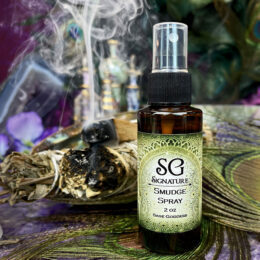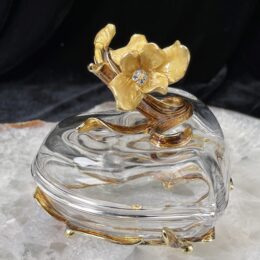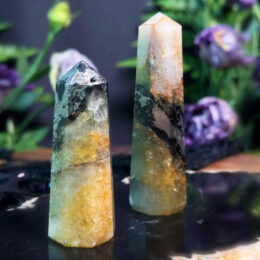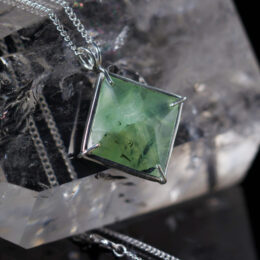Your cart is currently empty!
Peridot Guide: Properties and Meaning
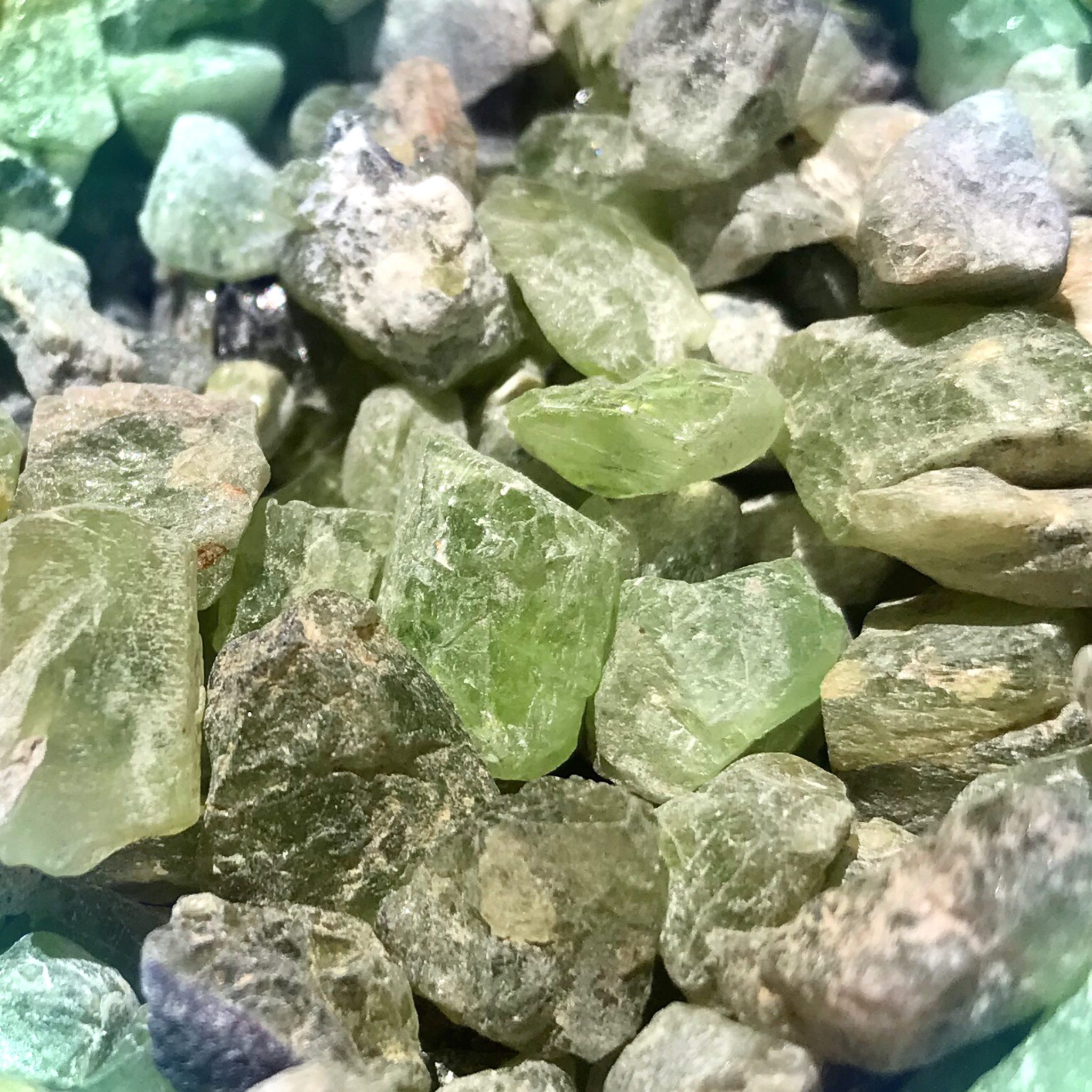
Peridot Properties
Color: GreenMohs Hardness: 7Chakra: HeartCrystal Structure:OrthorhombicLocation: Pakistan, Burma, Australia, Brazil, South Africa, US
About Peridot
Peridot is a beautiful gemstone associated with the Heart chakra, located in the center of the chest. It is known for its vibrant green color, which is also associated with the Heart chakra. Peridot promotes love, compassion, and emotional balance. It is often referred to as the Stone of the Sun and is associated with prosperity, manifestation, dedication, leadership, self-actualization, cornucopia, good luck, and good fortune. Many people choose Peridot to attract positive energy and abundance into their lives.
The history of Peridot
Peridot has a rich history that dates back thousands of years. It was mined as early as 1500 BC on the Egyptian island of Zabargad, which was known as Topazios at the time. The ancient Egyptians considered Peridot to be the gemstone of the sun and believed it had protective powers against evil spirits. It was highly valued and often used in jewelry, including the famous jewelry of Cleopatra. Peridot was also cherished by the ancient Greeks and Romans, who associated it with the goddess Athena and believed it brought good fortune. Today, Peridot continues to be a popular gemstone, admired for its beauty and its connection to love, abundance, and positive energy.
What are the healing properties of Peridot?
Peridot promotes prosperity, manifestation, dedication, leadership, self-actualization, cornucopia, good luck, and good fortune.
What are the metaphysical/spiritual properties of Peridot?
Peridot is associated with the Heart chakra, responsible for love, compassion, and emotional balance. It is also referred to as the Stone of the Sun and is considered Athena’s birthstone. The green color of Peridot represents growth, renewal, and abundance, making it a popular choice for attracting positive energy and good fortune.
Peridot FAQ
What Peridot used for?
Peridot is used for various purposes, including jewelry making, as it is a beautiful and vibrant gemstone. It also has healing properties and is used in alternative medicine practices. Additionally, Peridot is used in spiritual practices and is associated with attracting abundance and prosperity.
What Peridot do?
Peridot has several beneficial effects on the wearer. It promotes clarity of thought, increases self-confidence, and enhances creativity. Peridot also alleviates stress and anxiety, bringing a sense of calm and balance to the wearer.
Can Peridot go in water?
Peridot is generally safe to be submerged in water. However, it is recommended to avoid exposing Peridot to harsh chemicals or extreme temperature changes, as it may damage the gemstone. It is always best to consult with a professional jeweler for specific care instructions.
How to cleanse Peridot?
To cleanse Peridot, you can use various methods. One common method is to place the gemstone under running water for a few minutes, visualizing any negative energy being washed away. Another method is to bury the Peridot in the earth for a day or two, allowing it to reconnect with nature’s energy. You can also cleanse Peridot by smudging it with sage or using sound vibrations, such as a singing bowl or bell.
What Peridot do spiritually?
Peridot has powerful spiritual properties. It enhances spiritual growth, strengthens intuition, and promotes a deeper connection with nature and the universe. Peridot is also associated with the heart chakra, helping to open and heal emotional wounds, and fostering love and compassion.
How to clean Peridot?
To clean Peridot, you can use mild soapy water and a soft brush or cloth. Gently scrub the gemstone to remove any dirt or residue. Avoid using harsh chemicals or ultrasonic cleaners, as they may damage the gemstone. After cleaning, rinse the Peridot thoroughly and pat it dry with a soft cloth.
How to spot fake Peridot?
To spot fake Peridot, there are a few things to look out for. Genuine Peridot has a distinctive olive-green color, so if the gemstone appears too bright or neon green, it may be a fake. Additionally, real Peridot has a high refractive index, so it should sparkle when exposed to light. If the gemstone lacks brilliance or appears dull, it may not be genuine. It is always best to purchase Peridot from reputable sources.
Is Peridot toxic?
Peridot is not toxic and is generally safe to wear. However, it is always recommended to handle gemstones with clean hands and avoid ingesting them. If you have any concerns or specific health conditions, it is best to consult with a medical professional.
Where Peridot found?
Peridot is found in various locations around the world, including the United States, Egypt, Myanmar, Pakistan, and China. One of the most famous sources of Peridot is the San Carlos Apache Reservation in Arizona, where high-quality gemstones are mined.
How Peridot pronounced?
Peridot is pronounced as “pair-uh-doh” or “pair-uh-dot.” The emphasis is on the first syllable, and the “t” at the end is silent.
What chakra associated with Peridot?
Peridot is primarily associated with the heart chakra, which is located in the center of the chest. It helps open and balance this chakra, promoting love, compassion, and emotional healing.
Can Peridot be in the sun?
Peridot can be safely exposed to sunlight. In fact, Peridot’s energy is enhanced when it is exposed to natural light. However, prolonged exposure to direct sunlight may cause the color of the gemstone to fade over time.
How to charge Peridot?
To charge Peridot, you can place it in direct sunlight or moonlight for a few hours. Visualize the gemstone absorbing the energy of the sun or moon, and set your intention for what you want the Peridot to help you with. Alternatively, you can bury the Peridot in the earth for a day or two, allowing it to absorb the earth’s energy.
What hardness of Peridot?
Peridot has a hardness of 6.5 to 7 on the Mohs scale, making it a relatively durable gemstone. However, it is still susceptible to scratches and should be handled with care. It is recommended to store Peridot separately from other gemstones to avoid any potential damage.


